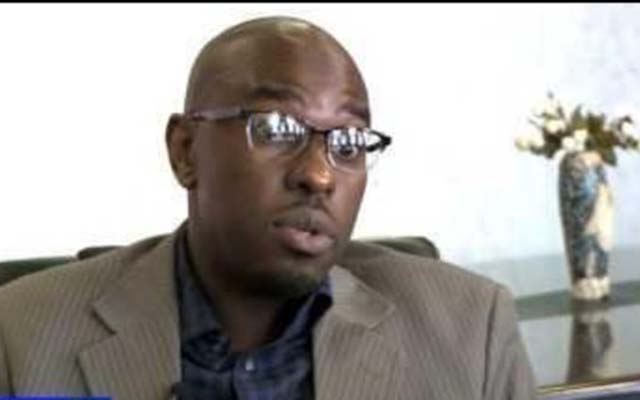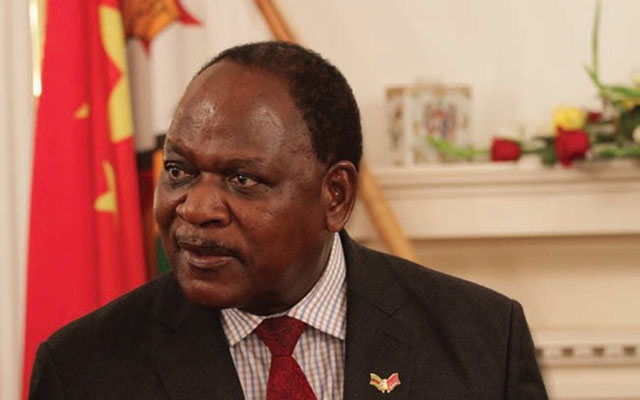Renewables engine for youth empowerment: Mhuriro

Jeffrey Gogo Climate Story
It so happens that Simbarashe Mhuriro turns 33 today. But his young age belies the successes that the youthful entrepreneur has achieved since founding the renewable energy company Oxygen Africa Ltd in 2013. In 2016, Mhuriro was named among Africa’s 30 most promising and inspirational young entrepreneurs by Forbes Magazine as well being recognised by the Africa Youth Awards as one of 100 most Influential Young Africans for that year.
Now with a little over a decade of experience in business and management, the Oxygen Africa Ltd chief executive today leads a company that is developing a pipeline of commercial and industrial rooftop solar projects. The biggest of these ventures is the $28 million Old Mutual Zimbabwe solar project, targeting to install the equivalent of 20 megawatts of solar panels on all the insurer’s commercial properties. Between October 14-22, Mhuriro attended a UN-supported global youth conference in Russia, invited to share his entrepreneurial skills with over 20 000 young men and women from across the world; to talk about how renewable energy could transform economies and livelihoods through partnerships and innovation. We spoke to Mhuriro on his Russia experience, and on other clean energy nitty-gritties. Below is an excerpt of the interview. I am represented JG, and him SM.
JG: You were in Russia for a global youth meeting. Tell us about that meeting and your experience there?
SM: I was invited to make an address on African Energy access at the opening ceremony of the 19th edition of the World Festival of Youth and Students organised by the World Federation of Democratic Youth (WFDY), a United Nations-recognised international youth non-governmental organisation, jointly with the International Union of Students since 1947 and is the largest gathering of youth and students in the world. I also participated in a panel discussion on entrepreneurship and innovation “The Inevitability of Innovation: Devise, Implement and Employ’’. The festival attracted over 20 000 participants from around the world, the opening ceremony was attended by 12 000 youths and the panel discussion had an audience of about 1600.
JG: How important are such conferences to building and developing entrepreneurship for Zimbabwean youth?
SM: Such events are important in bringing together young minds to develop working relations, share ideas and experiences from across the world. It is an opportunity to market your country and present it as an investment destination, together with being a source of innovation and answers to today’s questions around attaining global sustainable development goals.
JG: We understand that you had an opportunity to brief Russian President Vladimir Putin over your renewable energy projects back here at home. Is that right? What did you say to him. . . and what did he say to you?
SM: Yes I had the opportunity to brief the president and his first deputy chief of staff Mr Sergey Kiriyenko on our solar project, ask for more Russian participation in agriculture as they have a massive fertiliser industry that has created six billionaires. The president told me how Russia is doing a lot in the field of renewable energy and has recently started manufacturing solar panels which are considered the best in the world in terms of efficiency and in terms of durability. They (Russians) have been using solar for years to heat up oil pipes that run through the country’s northern regions. I was impressed that solar is sufficient. He sees these sources of energy (oil and solar) being connected and will continue to develop side by side for many years to come.
JG: You were one of a select few speakers at the Russia meeting. What message did you have for budding youth entrepreneurs of the world, particularly as far as clean and renewable sustainable energy is concerned?
SM: Drive and implement the global sustainable development goals, compliment and support your respective governments’ policies and goals in relation to sustainable energy, climate action and the environment. Participate in you countries economic growth; dream big, come up with that big energy idea financiers will flock to. Anything is possible.
JG: Your company, Oxygen Africa Ltd is implementing a 20 megawatt rooftop solar project on buildings owned by Old Mutual Zimbabwe. Can you give us a sense of the progress you have so far made . . . and whether you think the project is scalable?
SM: We are at the final stages of concluding financial closure and moving towards construction of the pilot sites in Harare.
JG: What role can renewable energy play in driving Zimbabwe’s economic and environmental goals? How can Zimbabwean young men and women participate in this transition?
SM: Renewable energy has the opportunity to attract foreign investment, or if locally funded, substitute the importation of power.
The economy cannot grow without reliable sustainable power. There is an opportunity for young men and women to participate right across the value chain of a project from financial and legal advisory, procurement, engineering and construction. I am a big believer in ecosystems where we work in teams to bring a project together, everyone has a seat at the table and each plays their position effectively, delivering results. With regards to environmental goals, we anticipate that upon completion the Old Mutual Zimbabwe project will achieve a net power generation of 32 gigawatts per year and avoid upto 30 000 tonnes of carbon dioxide emissions each year.
JG: While in Russia, you participated in a panel discussion that featured a Russian billionaire and other Russian government ministers. How important was this event to telling the Zimbabwean story on renewables, and whether the Russia visit presented opportunities for investment/partnerships in renewable energy for youth-led businesses?
SM: I took the opportunity to showcase Zimbabwe as an investment destination and place where the policy, corporate and financing framework enables young entrepreneurs to innovate, start businesses and succeed.
We wanted to show what is being done in the renewables space in Zimbabwe from the point of view of a young entrepreneur; the support we have received in developing our project from Old Mutual Zimbabwe, the Government, banks and others. I also stressed how important it is for young entrepreneurs to align their projects to the vision and goals of their clients, government/policy framework and their investors and lenders in order to create an ecosystem where every party can extract value. So we didn’t seek investment opportunities and partnerships per say, but to share our story with youths from across the world and tell them that entrepreneurship is possible in Zimbabwe and Africa and this is what is happening on the ground.
JG: How can such meetings as the one in Russia be made to work for the young Zimbabwean company, partcularly those looking at mitigating the emission of climate damaging gases?
SM: It is an opportunity to learn about new ideas and innovations, how they have been successfully implemented elsewhere so that they can be adopted back home.
It is also a chance to show case what is happening back home and the local innovations invested to tackle environmental issues. Recently I learned about The Tsapo Bag project is an initiative by the Enactus Organisation from the Midlands State University, which manufactures insulation bags from recycled styrofoam waste or kaylite and old vinyl banners. The bag is used to store food and keep it warm by conserving heat. We all know the impact kaylite was having on our environment and this innovation has potential to be scaled up and exported to the region and beyond if given the opportunity to showcase at platforms like that presented in Sochi, Russia
JG: Thank you for your time, Mr Mhuriro.
SM: You are welcome. Thank you.
God is faithful.











Comments